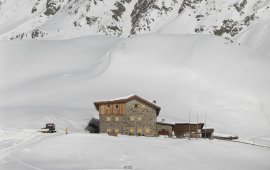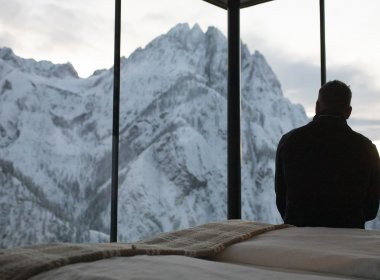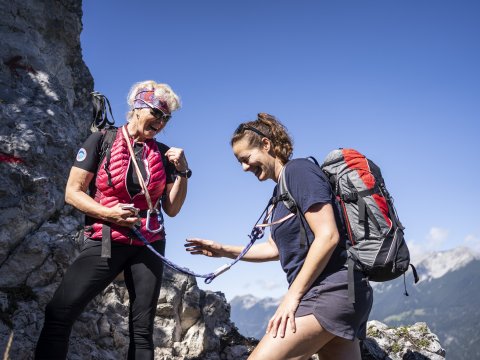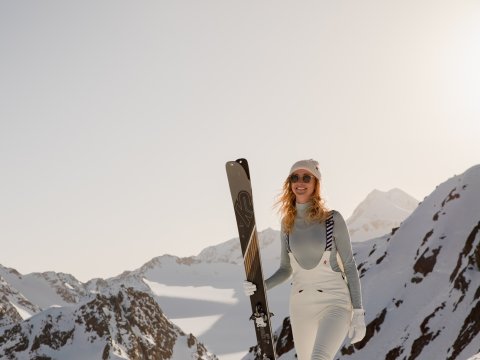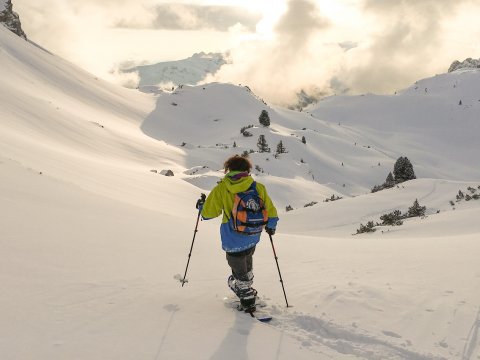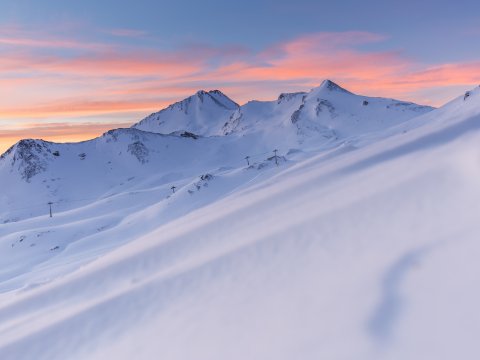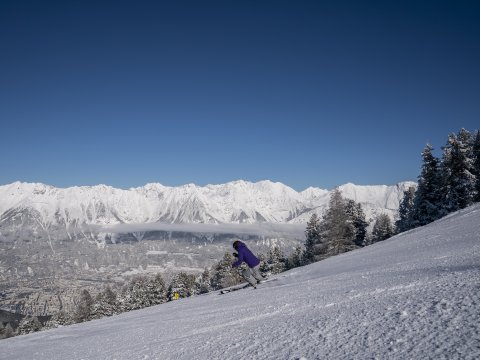High in the Silvretta Mountains: Jamtalhütte
Some huts are part of the landscape. For decades, centuries even, they have offered refuge in the high mountains – a hot meal and a warm bed. One such iconic hut the Jamtalhütte, hidden away in the Silvretta Mountains above Galtür.
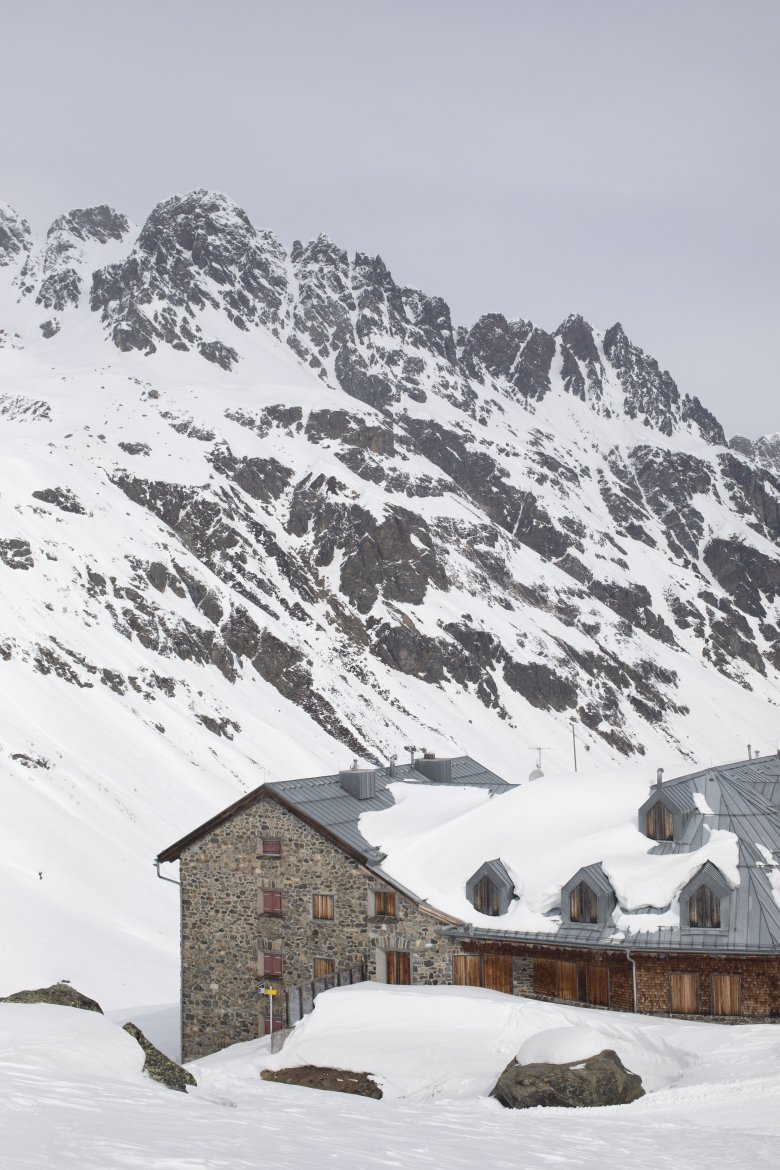
Measuring 12 kilometres in length, the Jamtal Valley slices deep into the Silvretta Mountains near the village of Galtür. At the end of the valley, in the heart of the mountains, stands the mighty Jamtalhütte. It is one of the main refuges in this region of Tirol with only few ski lifts and plenty of untouched terrain popular for ski touring. Many of the mountains are at least 3,000 metres high, but the long approach through the valley means visitors have to earn their turns and complete several hours on foot just to get to the hut, let along the peaks above.
There are few experiences like spending a night at a hut in the mountains of Tirol. Absolute silence and panoramic views allow visitors to escape the hustle and bustle of daily life and get away from it all for a few precious moments. Some huts can be easily reached from ski resorts accessible by lift and cable car, while others require a walk along a snowy road or trail. The highest huts in Tirol have only a "winter room" which can be used by skiers and mountaineers as a self-accommodation refuge. The Jamtalhütte is, however, not one of those huts. It remains open in winter and offers a hot meal and warm bed to all those willing to take on the long walk into the valley. It may be remote, but the welcome is all the warmer for that.
Huts like these are in many ways the essence of what it means to escape to the mountains. They can't be reached in just a few minutes by car. There's no chance of simply popping up for a beer after work. They are far from civilisation, hard to reach – something we are less and less used to in our modern on-demand, instant gratification society. The adventure begins in the ski resort of Ischgl, where we catch one of the last cable cars up onto the Piz Val Gronda and ski down through the cold afternoon light to the Heidelberger Hütte. We could opt to stay the night here and continue on to the Jamtalhütte tomorrow, but we are feeling good and decide to complete the approach (700 vertical metres) to the hut that evening.

Spring has sprung in the Alps, so the days are longer than in winter. Here and there we can already see little shoots of green poking out of the thick snow. The light is slowly fading as we approach the Jamtalhütte from the west. "Hut" sounds small and quaint, but the Jamtalhütte is anything but. It traces its origins back to the 1880s, when a somewhat smaller hut was built on this site. In the late 1970s this small hut was significantly expanded and also became the permanent training centre for the German Alpine Club. In February 1999, however, two avalanches struck the eastern and southern sides of the hut, causing significant damage.
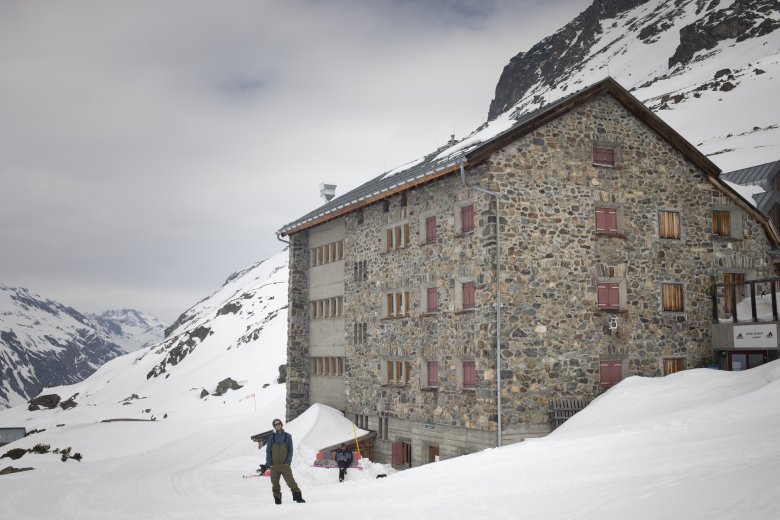
Gottlieb Lorenz, the man in charge of the Jamtalhütte, remembers it well. He was fortunate to be in the kitchen with two guests when the avalanches hit. If they had been in the dining room, he says, things might have been a lot different. Just one day later the nearby village of Galtür was shaken by a series of huge avalanches which left 31 people dead, including Gottlieb's wife and his mother. Instead of throwing in the towel and turning his back on the hut, Gottlieb set about rebuilding the Jamtalhütte that very summer and has remained there to this day.
"The old hut was three floors high on this side," explains Gottlieb on a tour of the premises. "After the avalanche we moved the roof down. The walls are now made of solid concrete. The windows have steel frames 10cm thick." For more than 100 years the hut had remained untouched by the many avalanches in the region. Now, after the tragic experience of 1999, the community of Galtür has learned its lesson. If a similar avalance were to hit the Jamtalhütte today, Gottlieb explains, it would roll straight over the top.

As he speaks of these tragic events almost 25 years ago, Gottlieb is quiet and contemplative. He was, he tells me, lucky enough to marry again. What about the hut? Did he ever think of leaving it all behind? "No," he says. "I still enjoy doing what I do. It's part of me. I run the hut as if it were my own home." It didn't take long for the rebuilt Jamtalhütte to become popular once again as a base for ski touring enthusiasts in the Silvretta Mountains. Gottlieb is the fourth generation of his family to run the hut – it has been in the same hands since 1882. Despite its remote location it has welcomed more than a few famous names over the years, including Ernest Hemingway and Albert Einstein. The colourful prayer flag flapping in the wind were sent over by a Sherpa friend from Nepal whose family Gottlieb has supported for years.
When it comes to ski touring options, guests staying at the hut are spoilt for choice. Some are short and easy, leaving plenty of time for a cool beer at the hut before sunset, while others such as the Dreiländerspitze and the Piz Buin are longer and more challenging. These are generally completed as part of a ski tour safari across the Silvretta Mountains. Gottlieb sums up the classic route for us in a few words: "Heidelberger Hütte, Piz Tasna, overnight stay, Kronenjoch to us. Augstenbergl and another night here. Dreiländerspitze, Wiesbadenener Hütte. Finally, Piz Buin. Then it's Saturday again." We decide to take on the Chalausköpfe the next day, where the north-west-facing slopes promise powder even in spring.


What makes the Jamtalhütte so special for Gottlieb? "It's a big hut. Busy. Lots going on. Some people like things quieter," he says. "But for us it makes sense to have a hut like this. We gets lots of people up here in winter because there is so much good ski touring. We've often had people from ten or twelve different countries staying with us at the same time." In winter the Jamtalhütte is all about ski touring. "Skiers need to know the basics of skiing in open terrain. If not, better to book a mountain guide," says Gottlieb. On the other hand, he says, most mountains are first skied by groups led by mountain guides. By following their tracks in the snow others can stay on the safe side if they do not have a guide of their own. "I always go round after dinner and ask people what they are planning on doing the next day. Often they will come to me and ask me for advice. In that case it is my job to recommend the right kind of mountain depending on their skill and experience level."
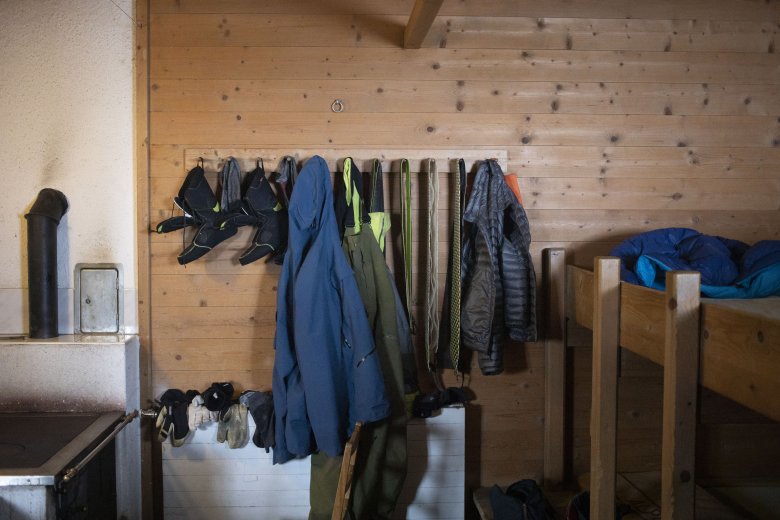

And, even if the days are long and the terrain is rugged, Gottlieb Lorenz – like most people who run similar huts – would much rather be in charge of a hut than a hotel. "People are sometimes more demanding than they were in the past," he admits. Proof can be found in the fact that the most recent expansion of the hut created more individual rooms for guests and fewer shared dormitory places. "The most important thing, though, is to offer a genuinely warm welcome to everyone who comes through the door. If the hut is clean, the food is tasty and the beer is cold, pretty much everyone is happy."
As our visit slowly draws to a close, Gottlieb offers to take us back down to the village of Galtür in his winter vehicle with special caterpillar tracks to grip the snow. As we trundle down the snow-covered road, he suddenly brakes and points excitedly towards a fuzzy dark spot in the snow. "Look, a mountain goat!" Gottlieb, who has spent his whole life in the mountains, is as thrilled as a child setting eyes on such an animal for the first time.
"Just look at it. Amazing!"
High and Mighty: The Winter Huts of Tirol
Tradition, seclusion and the power of nature. This series takes a look at the most beautiful winter huts in the mountains of Tirol.









